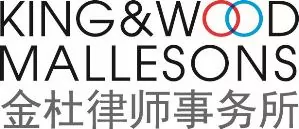2012 has witnessed another year of growing demand and strong deal flows in the Chinese aviation market. By year end, more than 350 new aircraft will have been delivered for operation in China including commercial airplanes and business jets. Active participation of Chinese banks and leasing companies (through both onshore and offshore entities) along with innovative transaction structures developed for the Chinese market by market participants and their counsels have contributed to the robust growth.
US Export-Import Bank Guaranteed Structure
For the first time in Chinese aviation finance history, a Chinese airline is able to leverage over the credit support of the Export-Import Bank of the United States ("US Ex-Im Bank") without a guarantee from a Chinese bank or a sovereign undertaking from the Chinese government. The specific transactions are 2011-2012 deals in which Air China leased the Boeing 777-300ER aircraft from a Delaware trust entity financed through credit facilities and issuance of USD bonds as guaranteed by the US Ex-Im Bank.
These are the first deals in which the US Ex-Im Bank has financed Chinese airlines after the Cape Town Convention ("Convention") took effect for China, where the US Ex-Im Bank was taking the aircraft asset risk rather than country risk of China. The Convention has played an important part for the US Ex-Im Bank to change its risk assessment, because it establishes a trans-jurisdictional regime which would recognize the "international interest" of a creditor (for instance, lessor and mortgagee) over the aircraft object and provides speedy remedies for such interests (subject to the reservations of the relevant contracting state).
From the perspective of PRC law counseling, the structural complexity of the transactions requires in-depth understanding of many elements, including the Convention, its implementation in China and interplay with Chinese domestic laws, the State Administration of Foreign Exchange (SAFE, the Chinese authority in charge of foreign exchange registration), the Civil Aviation Administration of China (CAAC, the Chinese aviation authority in charge of aircraft right registration and the entry point in connection with the registration of International Interests under the Convention), tax issues, and finally customs procedures. A guide through this regulatory maze is essential to achieve successful closings.
With delivery of the last aircraft in the fourth quarter of 2012, the new US Ex-Im Bank structure has become a transaction type of its kind for PRC airlines (particularly the three large carriers) in acquiring wide-bodied Boeing aircraft.
Bonded Zone Special Purpose Vehicle Structure
Bonded zones have become increasingly important for the aviation finance market, especially Chinese banks and leasing companies, ever since the China Banking Regulatory Commission (CBRC, the regulatory authority that supervises the business and operation of banking institutions in China including financial leasing companies) and the local customs authorities lifted the policy to allow leasing companies to hold aircraft title and lease aircraft through special purpose vehicles ("SPV") in the bonded zones. Statistics shows that in Dongjiang (a bonded zone in Tianjin) alone, over 150 SPVs have been set up to operate aircraft leasing businesses by the first quarter of 2012. Such SPVs channel onshore/offshore USD funds to the aircraft manufacturers and in turn the cash flows from airlines to the onshore/offshore lenders/investors.
As local PRC governments promote new tax policies to boost development of the leasing industry, it is likely that bonded zones will become a central area for Chinese lessors (and probably foreign invested lessors) to book more aircraft financing deals. That said, tax incentives are only one aspect. Issues concerning foreign exchange restrictions, security interests, bankruptcy remoteness, marketability of transaction documents (PRC law versus the law of other jurisdictions) all need to be considered to avoid surprises.
Ongoing Tax Reforms in the PRC
Tax policy changes affect the funding cost for the PRC airlines. Due to an ongoing tax pilot scheme to convert cross-border-lease-related business taxes to Value Added Tax ("VAT"), a program that is expanding to many regions of China, VAT will be levied on the rental payment to offshore lessors made by nearly all major airlines at the rate of 17% by way of withholding. Though the nominal tax rate has increased, effectively the airlines would be able to benefit from the reform by setting off the lease VAT against other VAT.
According to estimates by aircraft manufacturers, the China market can expect about 5,000 new aircraft (at a value of about USD 600 billion) to be delivered over the next two decades. There would be more airplanes on order for delivery to China and more transactions coming through. In such a growing market and with an evolving regulatory landscape, the financing transactions will likely be structured in ways that require both international and local expertise.
The content of this article is intended to provide a general guide to the subject matter. Specialist advice should be sought about your specific circumstances.


